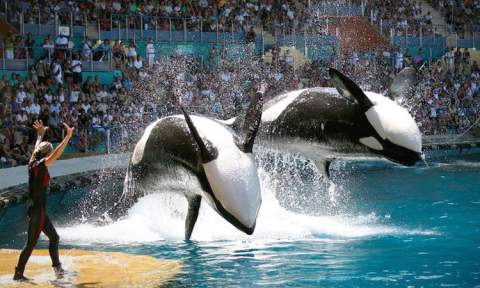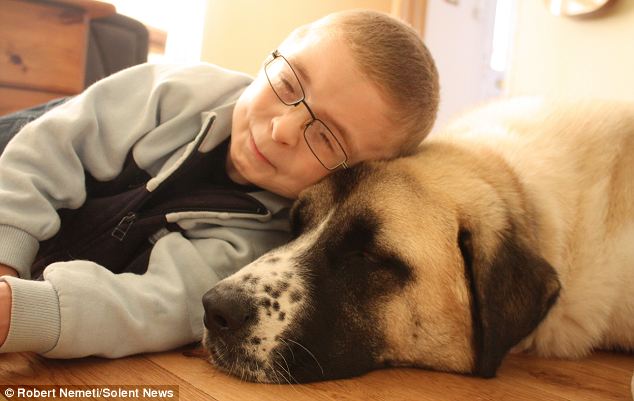K. B. (Kitty) Morgan is a friend of a friend. Love this story and thought you would enjoy it, too.
How We Came to Love Rottweilers
Most people dream of traveling when they retire. Having done so
much of that during our careers, my partner and I dreamed instead of having dogs in our lives again.
Our original retirement destination was 4 acres of beautiful,
off-the-grid wilderness on the NE corner of the Dominican Republic. We’d never built a house before
but, in preparation for our big move, we asked around and were told by just
about every expat living there that what the locals feared and respected most
were large dogs with black faces and pointed ears. I wanted a short flat coat
for wash and wear grooming and to see ticks quickly. We turned every page of
the big 700 Dog Breeds book and discovered there is but a single breed that
meets all four requirements: Dobermans. We
were mentally sold and started collecting books specifically on that breed.
Time marched on and while visiting the D.R. one summer, we met an
expat who bought a small café in town and an enormous 14-acre finca near our property. We were enjoying cocktails with him one
evening and discussing dogs when Gerry made the odd comment, "Nah, nah,
nah. You don't want Dobermans because a Doberman won't let anyone in...but a
Rottweiler won't let anyone out." This didn't make much sense to us
until we visited the fina a few days
later. A large red and white sign on the gate translated: “Caution, Bad
Dogs.” (Years later, our Mexican
neighbors had a similar sign on their front wall that read “Caution, Killer
Dogs” which turned out to be nine female Chihuahuas and their father, Romeo.)
Gerry wasn't at home when we arrived but his caretaker Pindo let
us onto the property. There was a small house near the front gate and a long garden
shed on the other side of the driveway, open on one side, where five enormous
Rottweilers were snoozing but quite alert. They were totally disinterested in us
two trespassers for the hour or so that we strolled the property until we
returned to the house to leave. Very slowly they rose; very slowly they
approached me, surrounded me, leaned into me and did that huffy drooling thing that
excited Rotties do. They expressed more and more interest as I tried inching my
way to the gate. I was terrified and froze in the driveway – so close and yet
so far from escape.
“Please,” I asked my partner, “go find Pindo, tell him we’d like
to leave but we’re afraid of Thor, Zeus and the three girls.”
Eventually, Pindo returned and put the dogs inside the shed as if
they were Yorkies. The minute I was on the other side of the
gate, my legs gave out and I crumpled to the pavement. I was shaking so hard I
couldn't stand. My partner and I looked at each other and decided then and
there that Rottweilers were probably too much dog for us. We were back to
Dobermans, such elegant quick creatures, unlike the lumbering, slobbering
Rottie.
Several weeks later, we spent a very pleasant afternoon at the finca picnicking on the grass with
Gerry, Thor and Zeus. When we asked Gerry where the three girls were, he told
us he had to re-home them because they were constantly raiding his neighbors’
properties, bringing home entire pigs and cows for dinner for which his
neighbors were demanding payment.
Fast forward and we ended up in Mexico’s Yucatan. We spent our first two years finding a house
and making it habitable before we were finally ready to bring home our
dogs!!! We had seen two very large Dobermans in the local nursery while
buying plants and asked the nurseryman where he got those beauties.
“Oh, those were untrainable,” he told us. “I sold them because
they were too high strung, had too much energy and were into everything.” (In my
opinion, they were obviously bored with so little to do except watch the plants
grow).
We were mightily disappointed until he added, “But I have
Rottweilers now and my bitch just delivered her first litter. Come see the puppies,
all thirteen of them!” We saw this as an
omen.
We fought the urge as long as we could, but eventually succumbed and
brought Bruno home, the best ambassador the breed could ever have. He was the
sweetest, most mellow, loving creature yet, even a playful slap from a friend
in my direction would have him up, his huge maw very gently around the
offending wrist. Don't mess with my
mommy!
| Rotweilersonline.com |
I only had one
dog as a child, a sweet mutt who lived to the ripe old age of 24 so I wasn't accustomed
to having dogs until Bruno taught me what I needed with infinite patience. He was
my best friend for 7 short years. He crossed the Rainbow Bridge in 2008 and I miss him
terribly to this day.
Bruno
made us Rottie fans and, in retrospect, they actually turned out
to be the best breed for us because we're older now and they're not quite as
energetic as Dobies. I know this from personal experience as our Willie is a
“Doberweiler“ (or “Rottenman,” if you prefer). He turned ten last November
and still has plenty of energy. Daily playtime with him wears us out but, I
confess, he's my favorite of our five adult dogs because of his huge
personality and goof ball antics.
After Bruno
came Ivan, pure joy in a fuzzy, black-and-tan package, followed by Chester (a/k/a Grumpy as he was a
soloist and never a pack member) and silly Willie, our Rottie-Dobie mix. They’re
all in Dog Heaven now except Willie who’s on borrowed time. Knowing this, last
month we brought home the next generation:
ten-week old brothers Ozzy and Gus. They will likely be our last dogs
and we hope they don’t outlive us as the market for re-homing adult Rotties is
slim to none. (Although we have provided doggie godparents for them in our
wills).
It has been a
wild and wonderful Rottie ride and I have never regretted choosing the
breed; they’re smart, playful, loyal and
extremely protective of their homes and their people.
| adogbreeds.com |
The
Rottweiler is a large size breed of domestic dog. The dogs were known
as "Rottweil butchers' dogs" because they were used to herd livestock
and pull carts laden with butchered meat and other products to market.














